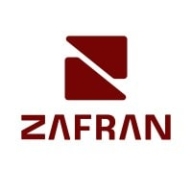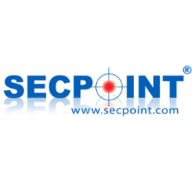


SecPoint Penetrator Vulnerability Scanner and Lacework FortiCNAPP are competing products in the cybersecurity space. Lacework FortiCNAPP seems to have the upper hand in cloud-native application protection, while SecPoint Penetrator's strength lies in its affordability and reliable customer support.
Features: SecPoint Penetrator provides extensive vulnerability scanning capabilities with detailed reports and real-time threat intelligence, catering to organizations focused on regular network assessments. It offers specialized network scanning, delivering insights crucial for maintaining security compliance. Lacework FortiCNAPP offers automatic anomaly detection and integrated threat response benefits, along with robust compliance checks, appealing to businesses invested in cloud environments. Its broad application protection and comprehensive cloud security features set it apart for enterprises needing extensive coverage.
Ease of Deployment and Customer Service: Lacework FortiCNAPP integrates seamlessly into cloud environments and offers proactive support to optimize security solutions, ensuring a streamlined experience. SecPoint Penetrator's straightforward setup and emphasis on user guidance make it accessible, with rapid support response enhancing user experience. Lacework provides advanced integration, contrasting with Penetrator's focus on ease of use and customer service.
Pricing and ROI: SecPoint Penetrator offers a cost-effective solution with a lower initial setup cost, making it an attractive option for small to medium businesses prioritizing budget-friendly alternatives. Its favorable ROI appeals to those seeking simplified security without financial strain. Lacework FortiCNAPP, perceived as pricier, delivers security features that justify the cost for enterprises seeking comprehensive cloud security platforms. It potentially provides a higher ROI when considered over time due to its extensive feature set.


Zafran Security integrates with existing security tools to identify and mitigate vulnerabilities effectively, proving that most critical vulnerabilities are not exploitable, optimizing threat management.
Zafran Security introduces an innovative operating model for managing security threats and vulnerabilities. By leveraging the threat exposure management platform, it pinpoints and prioritizes exploitable vulnerabilities, reducing risk through immediate remediation. This platform enhances your hybrid cloud security by normalizing vulnerability signals and integrating specific IT context data, such as CVE runtime presence and internet asset reachability, into its analysis. No longer reliant on patch windows, Zafran Security allows you to manage risks actively.
What are the key features of Zafran Security?
What benefits can users expect from Zafran Security?
In industries where security is paramount, such as finance and healthcare, Zafran Security provides invaluable protection by ensuring that only exploitable vulnerabilities are addressed. It allows entities to maintain robust security measures while allocating resources efficiently, fitting seamlessly into existing security strategies.
Lacework FortiCNAPP provides robust cloud security, combining vulnerability management and multi-cloud insight with user-friendly controls, machine learning detection, and compliance support.
Lacework FortiCNAPP specializes in cloud security by merging machine learning anomaly detection with agent-based vulnerability management to offer detailed alerts and compliance reports. Its comprehensive approach allows continuous monitoring across AWS and Kubernetes, providing insights from an attacker's perspective. The platform offers automation and seamless Slack integration, facilitating collaborative and efficient cloud security management. Users value its ability to handle multi-cloud environments and scan IAC scripts, configurations, and compute nodes across AWS and GCP.
What are the key features?Organizations across sectors leverage Lacework FortiCNAPP for cloud security, focusing on compliance, security posture, and vulnerability management. It is widely used for monitoring AWS and Kubernetes environments, scanning IAC scripts, configurations, and securing compute nodes. It supports multi-cloud security posture management and log ingestion, enabling companies to maintain strong cloud infrastructures without dedicated security layers.
The SecPoint Penetrator is a vulnerability scanning device that simulates how a hacker could penetrate a given system (hence the term) and reports vulnerabilities, which should then help strengthen security measures against online outlaws, virtual villains, cyber criminals, techno terrorists, and other nefarious elements of the Worldwide Web at large.
The SecPoint Penetrator is a vulnerability scanner, vulnerability management of great significance because it's actually capable of simulating cyber attacks against systems so that they are better prepared for anything a hacker might have under his sleeve, so to speak. In essence, the Penetrator will scan your device, network, or database to ensure that it is vulnerability-free.
To be more specific, vulnerabilities are the holes and coding flaws that hackers exploit so that they could wreak havoc on any supposedly secure website or domain. Their malware programs will likelier gain access to a given network if they could identify vulnerabilities that the network owner neglected to find. Therefore, the Penetrator is an essential reporting device that records in XML, HTML, and PDF all those minor-to-critical vulnerabilities before these online outlaws do.
We monitor all Vulnerability Management reviews to prevent fraudulent reviews and keep review quality high. We do not post reviews by company employees or direct competitors. We validate each review for authenticity via cross-reference with LinkedIn, and personal follow-up with the reviewer when necessary.